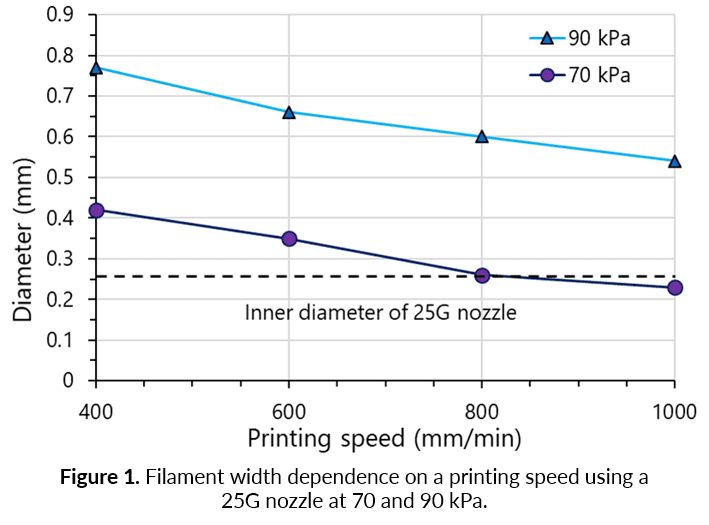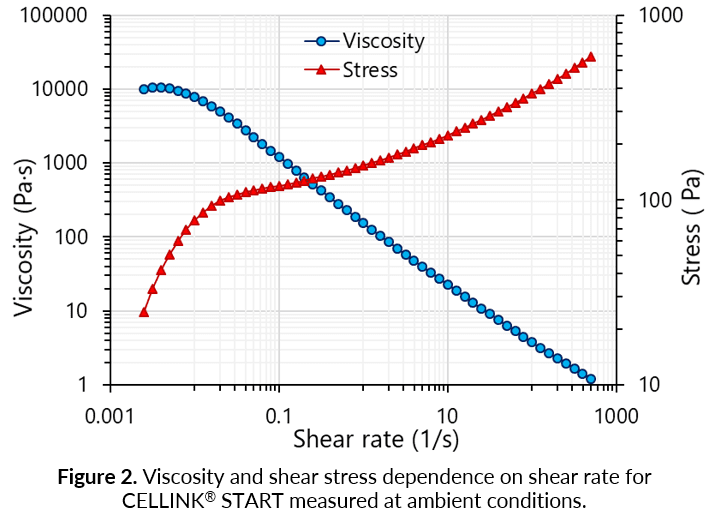3D bioprinting with support
Products used:
CELLINK A (discontinued product)
Pluronics 40% ➝
CELLINK START ➝
CELLINK Bioink ➝
BIO X ➝
Print in perfect detail
When you want to achieve highly detailed structures with a bioink that needs support, CELLINK PLURONICS is perfect to use as a sacrificial ink. Bioprint CELLINK PLURONICS at room temperature and simply remove it by placing the printed construct on ice or the cooled print bed, and wash with a cold liquid.
In the video, CELLINK PLURONICS is used as the perimeter and CELLINK A is mixed with cell suspension as the infill. We crosslinked CELLINK A with our Crosslinking Agent and washed away the sacrificial perimeter with cold Hank’s Balanced Salt Solution, leaving a detailed construct ready for cell culture. The G-code for printing this diamond structure can be found on Bioverse. The G-code to this three-layered grid structure can be found on Bioverse!
Excellent printability
CELLINK PLURONICS is liquid at 4°C but thickens with increased temperature and at room temperature it has a good printability. Print structures in room temperature, either as support or as scaffold to cast bioinks with low viscosity in, then cool down the ink to make is viscous and easy to remove.
CELLINK PLURONICS as a support ink demonstrates exceptional printability under ambient conditions. Choosing the right printing speed and pressure, one can achieve the filament diameter that is very close to the inner diameter of an extrusion nozzle (Figure 1). This printing precision makes it possible to generate a well-defined network that can be transformed in microfluidic channels or vascularized tissue constructs after the dissolution of CELLINK PLURONICS at 4°C.

Supporting overhangs
CELLINK START is a suitable ink to use when starting 3D bioprinting. It has a great printability which makes it easy to use when printing complex structures. We offer both sterile and non-sterile alternatives of this ink, use the non-sterile ink to visualize construct geometries before using cells and the sterile version as support for cell-laden construct in the need of extra support.
In this video beside we used the BIO X to print at -15° C! We printed an ear using CELLINK Bioink which was supported in the overhang by CELLINK START in the second printhead. The STL file for the human ear model, resized by 50%, can be found on Bioverse. Make sure to select Support under Printhead use in the Layers tab on the BIO X menu.
Versatile for all needs





